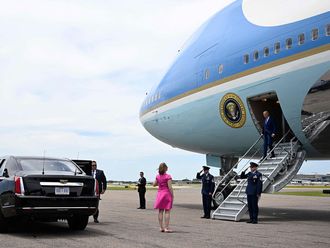Last week I made the regular weekend phone call to my mother in India to check on her health and get the usual neighbourhood gossip. Before I could complete the first hello, the lady screamed from the other end that sugar prices have hit Rs75 (Dh5.91) per kg in our home town.
I enquired why she, being diabetic, should be hassled about sugar prices. That infuriated her even more. She proceeded to rattle off a litany of items and their respective price increases during the past few months.
If my mother, who has no immediate concern about her bills, could be so agitated about the rising cost of living in the country, imagine the status of millions who live either below the poverty line or close enough to it.
Consumer price growth in India is the highest among Asia-Pacific countries, according to Bloomberg data. Consumer prices paid by industrial workers rose 15 per cent in December from a year earlier, the most in 11 years.
The wholesale food price index, measuring prices in a basket of goods such as lentils, rice, vegetables and other food articles, as compiled by the commerce ministry, increased 17.6 per cent in the week to January 23 from a year earlier. The rate of inflation for the ‘non-food articles' category increased to 10.9 per cent from 6 per cent a year ago, the data shows.
The federal government has initiated limited measures through the public distribution system to arrest the price surge. But the first sign of an earnest effort against inflation so far has come from the Reserve Bank of India (RBI), which last week announced the third-quarter credit policy.
RBI last week hiked the CRR (cash-reserve ratio) — the minimum amount of funds which banks have to park with the central bank — by 0.75 per cent (from 5 per cent to 5.75 per cent), but stayed away from hiking the repo or reverse repo rates (the rate at which banks borrow from the RBI, and vice versa).
The move signals that the central bank is serious about draining excess liquidity. The cash-reserve ratio increase is estimated to mop up about $7.7 billion from the banking system. It is unlikely to have an immediate effect on lending rates, as banks have nearly $21.5 billion in surplus cash.
In late 2008, to fight the impact of the global economic crisis on the Indian economy, the RBI loosened lending rates. Now, as the economy recovers with high inflation (largely driven by food prices), and if the government intends keep its focus purely on economic growth, inflation is sure to take the sheen off real growth.
The RBI will need to perform a fine balancing job to exit its accommodative monetary policy to tame inflation while at the same time not hampering economic recovery. Of course, the way forward looks like a phased hike in interest rates.
Market operators and the growth brigade are not going to like it, for obvious reasons. Rising rates could undermine economic recovery. The tightening could curb bank lending that has just started to recover, and is likely to destabilise capital inflows.
Yet, what is the point of double-digit economic growth if the majority in the country can't afford tea with sugar? I am sure even my diabetic mother would agree.












